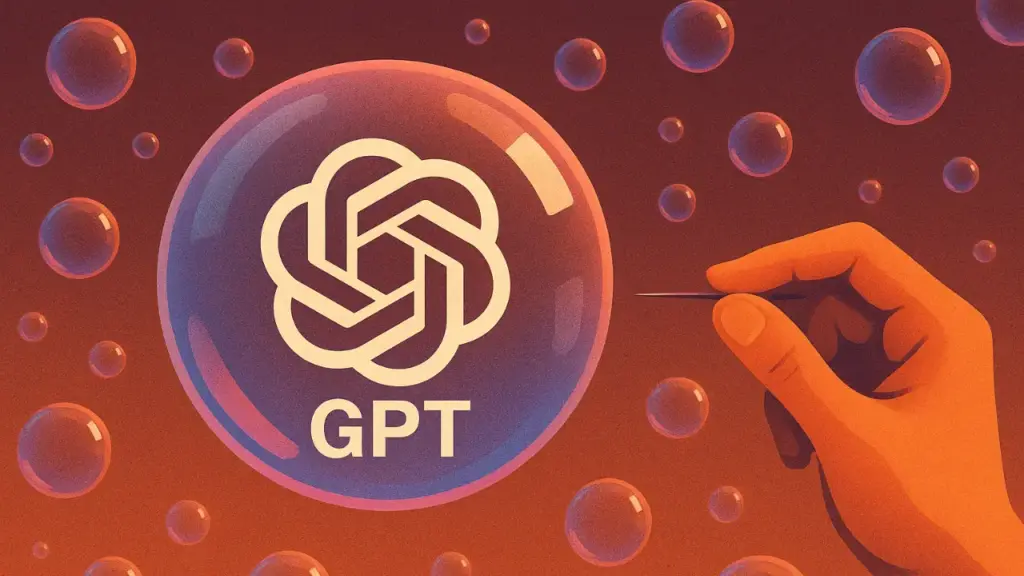Introduction
Remember the late ’90s when every company suddenly had “.com” in its name? That gold rush mindset is back, but now it’s all about AI. Businesses are adding “AI-powered” to their product descriptions and calling it a revolution. But most of the time, they’re just connecting their tools to ChatGPT and hoping it passes as innovation.
The hype is massive. Everyone wants in. But under the surface, much of what we call “AI” today is just clever repackaging. This blog dives into what’s really going on behind the scenes.
The Mirage of “AI Innovation”
At first glance, these new tools seem futuristic. They talk like humans. They answer complex questions. But dig deeper, and you’ll find a pattern. Most of them are simply layering a chatbot interface on top of existing workflows. Nothing new. Nothing revolutionary.
John Fitzpatrick, one of the minds behind Apple’s Siri, calls these tools “thin user interface layers on top of ChatGPT.” They look impressive but add little actual value. It’s like slapping a fresh coat of paint on a 10-year-old app and calling it new.
Many startups don’t even have their own AI models. They rely on prompt engineering and open APIs. There’s no real tech under the hood. No deep machine learning. Just a fancy front end.
Real AI vs. AI Marketing
Let’s be clear: there’s a huge difference between marketing buzz and real innovation.
Real AI improves your product from the inside out. It changes how users interact with it. It reduces complexity. It adapts to behavior. That kind of impact takes time, money, and a complete rethinking of the software.
But that’s not what many companies are doing. They’re rebranding old automation tools and calling them AI. Same features. New label. No real change.
I’ve been in boardrooms where executives said, “Can we add AI here?” with no idea what problem they wanted to solve. It wasn’t about value. It was about the label.
This is where we must draw the line. Not everything that looks intelligent is truly AI. Historical data analysis? Good software. Rule-based automation? Also good software. But neither is AI.
The Pattern Repeats
We’ve seen this before. First it was cloud-first. Then it was blockchain-powered. Now it’s AI-driven. Trends come and go, and companies chase them to stay relevant.
The problem? Chasing hype never builds long-term value.
Real tech transformations require rebuilding from the ground up. It means rethinking product architecture. It means hiring talent that understands machine learning and systems integration. It’s not as simple as plugging into ChatGPT.
These quick pivots often involve nothing more than marketing. No core changes. Just a new homepage, a few press releases, and maybe a chatbot that sounds smart but doesn’t actually help.
If your product didn’t need AI before, forcing it in now won’t magically make it better. And users will see through it.
The Investor Wake-Up Call
Venture capitalists flooded the market with billions over the past two years. Every startup had an “AI angle” to get funded. Investors chased FOMO. Startups responded by bolting ChatGPT into everything.
But now, the tide is turning.
Money is tightening. Investors are asking tougher questions. The biggest one: “Where’s the business model?”
Flashy demos used to win pitch meetings. Today, they aren’t enough. Investors want to see real use cases. Real adoption. Real revenue.
Fitzpatrick says it best: “Almost every startup now has to have an AI angle to secure funding, but that dependency is becoming a liability.”
Startups that built around real customer pain points are thriving. They’re not distracted by the hype. They’re focused on solving problems. And that’s what truly matters.
Sustainable Value Wins
I’ve worked with dozens of startups. The ones that last don’t chase trends. They ask hard questions. They build for the long haul.
These companies don’t just layer AI on top. They embed it into workflows. They design around it. They use AI to rethink how their product functions. And because of that, their users stick around. Their revenue grows. Their business survives market shifts.
On the other hand, startups that treat AI like a marketing trick end up scrambling. They burn cash. They lose users. They get left behind.
Innovation isn’t about buzzwords. It’s about building something useful, usable, and lasting. Real value wins. Always.

Conclusion: Beyond the AI Sticker
We’re entering a new phase of the AI boom. The hype is fading. The reality is setting in. Companies must now prove that their AI features make a difference. Investors are no longer impressed by a chatbot demo. They want results.
If your startup is truly solving a real problem, that will shine through. But if you’re just sticking “AI” on your homepage and hoping it boosts your valuation, you’re in for a hard landing.
At StartupHakk, we believe in cutting through the noise. We highlight startups that go beyond the hype and focus on delivering real value. If you’re building something authentic with AI, now’s the time to show it.




